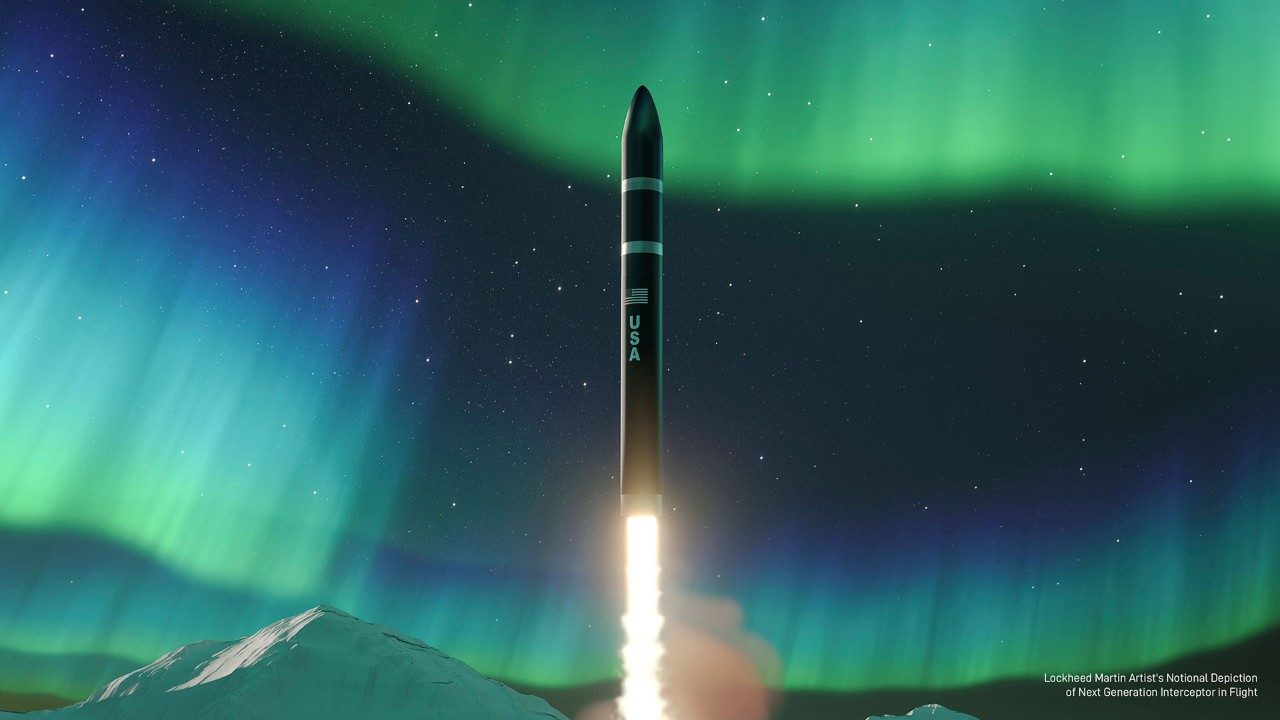Redefining Revolutionary: Lockheed Martin’s Next Generation Interceptor Progress Continues
Lockheed Martin is making rapid progress on the nation’s next homeland missile defense interceptor: Next Generation Interceptor, or NGI.
NGI plays an important role as part of the Ground-Based Midcourse Defense system. It is designed to protect the nation against long range ballistic missile attacks from rogue nations. And Lockheed Martin’s mature and reliable interceptor solution will help the warfighter stay ahead of these evolving threats. Read on for the latest milestones as Lockheed Martin is redefining revolutionary to deliver this capability.
Lockheed Martin recently announced something big for the NGI program: it has conducted its most important NGI program review to date with the Missile Defense Agency (MDA).
The program executed its Preliminary Design Review (PDR) for the All-Up Round (AUR) interceptor—or, the complete interceptor—on September 29. This means our NGI has achieved a high level of technical rigor and continues to meet requirements for the mission.
“I am proud of our team’s commitment to innovating with urgency to achieve and exceed expectations for this phase of the program,” said Sarah Hiza, vice president and general manager of Strategic and Missile Defense at Lockheed Martin. “With this additional confidence in our NGI design through a week-long - review with our MDA customer, we are on track to deliver the right solution to meet the needs of the nation and help them stay ahead of the threat.”
The Lockheed Martin NGI will now move forward toward the next major program milestone, the Critical Design Review, continuing to evaluate opportunities to accelerate schedule. To get to this point, Lockheed Martin is leveraging decades of corporate experience and expertise, embracing digital tools, and building a lasting team to drive innovation.
Path to PDR
Lockheed Martin has worked hard to reduce risk and mature the systems that make up its NGI. Proving the progress, the team validated the NGI program’s design for all elements through a series of subsystem PDRs with the MDA, announced in August. The company earned additional confidence in its offering through early and often testing of hardware and software.
Lockheed Martin has integrated hardware with development units to test our flight computer in a lab and validate how it interacts with every element of the interceptor solution. Testing also includes our sensor architecture. Lockheed Martin validated multiple sensor types within its NGI design, providing robust demonstration of critical mission performance. The company has also worked with industry partners to mature propulsion products, including hot fire testing of key components.
“NGI is the future. It’s next generation, by name and nature! We are designing our interceptor to be able to defend the homeland, if called upon, against the threats of today and those of tomorrow. While no one can predict what may come, we are committed to providing MDA with a mature and reliable solution capable of meeting the mission,” said Reeves.
This latest PDR milestone means Lockheed Martin’s NGI program has progressed solidly in its design work. The company will next begin procuring long-lead hardware to support manufacturing of flight test vehicles.
Proud Partners
Smart, industry-wide collaboration fosters heightened innovation and expanded capabilities.
In June, Lockheed Martin announced it is working with three small businesses -- Marotta Controls, Space Information Labs, and Valley Tech Systems, to bolster the defense industrial base and increase their opportunities to bid on government work in the future.
This is part of the Department of Defense’s Mentor-Protégé Program, which encourages prime contractors to serve as mentors in developing the technical and business capabilities of small businesses.
“Lockheed Martin recognizes the importance of The Mentor Protégé Program to promote small businesses and further grow the industrial base,” said Reeves. “Our work with small businesses is infusing niche capabilities and technologies for our NGI.”

Enabling Our Path to Production
The NGI team is pioneering Lockheed Martin’s vision for digital transformation, called 1LMX.
“Our embrace of digital tools, processes, and technologies, combined with the facilities we’re planning and constructing with the end mission in mind, inform our production plan and will enable us to meet our customers' production needs both today and well into the future,” Reeves explained.
AI-powered capabilities, machine learning, model-based engineering and digital twins are just some of the tools the NGI program is using to drive digital transformation and accelerate 21st Century Security.
Corporate investment in facilities is also key to the company’s NGI success. Lockheed Martin will soon open its NGI-exclusive Missile System Integration Lab for development, testing, and system integration in Huntsville, Alabama later this year. The company is progressing through hardware and software testing, starting with prototype hardware and moving to flight-like engineering units that will be integrated in the MSIL.
The NGI team’s digital-from-day-one approach, combined with a design and facility investment with the end mission in mind, enables the team’s continued progress.
Rocket Science, Reimagined
While the company’s interceptor is capable of revolutionizing the current defensive capability, it’s based on effective, battle-proven technology.
On NGI, Lockheed Martin is leveraging decades of experience in:
- Missile intercept technology and defense
- Space and radiation-hardened systems
- Space optical payload development
- Strategic missile systems
Lockheed Martin’s NGI will increase warfighter capability, providing an improved defensive solution to address the complex battlespace.
From interceptors like NGI to targets, satellites, radars, and sensors, the most effective missile defense architecture is open networked, and scalable. Lockheed Martin built the concept of layered defense from the ground up. Those lessons learned continue to pay forward to today’s solutions. In today’s global threat environment, integrated air and missile defense is an increasingly complex challenge that requires the best engineers, technicians, and more. Join our homeland missile defense team.




